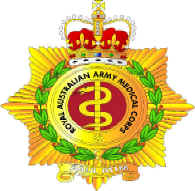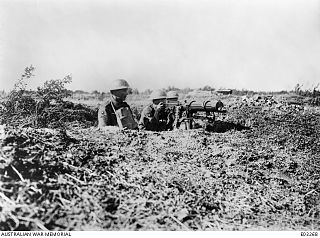
The Royal Australian Navy (RAN) is the naval force of the Australian Defence Force (ADF). The professional head of the RAN is Chief of Navy (CN) Vice Admiral Mark Hammond AM, RAN. CN is also jointly responsible to the Minister of Defence (MINDEF) and the Chief of Defence Force (CDF). The Department of Defence as part of the Australian Public Service administers the ADF.

The Royal Australian Air Force (RAAF) is the principal air and space force of Australia, a part of the Australian Defence Force (ADF) along with the Royal Australian Navy and the Australian Army. Constitutionally the Governor-General of Australia is the de jure Commander-in-Chief of the Australian Defence Force. The Royal Australian Air Force is commanded by the Chief of Air Force (CAF), who is subordinate to the Chief of the Defence Force (CDF). The CAF is also directly responsible to the Minister for Defence, with the Department of Defence administering the ADF and the Air Force.

A psychologist is a professional who practices psychology and studies mental states, perceptual, cognitive, emotional, and social processes and behavior. Their work often involves the experimentation, observation, and interpretation of how individuals relate to each other and to their environments.
The Australian honours and awards system refers to all orders, decorations, and medals, as instituted by letters patent from the Monarch of Australia and countersigned by the Australian prime minister at the time, that have been progressively introduced since 14 February 1975. The Australian honours and awards system excludes all state and local government, and private, issued awards and medals.

The First Australian Imperial Force was the main expeditionary force of the Australian Army during the First World War. It was formed as the Australian Imperial Force (AIF) following Britain's declaration of war on Germany on 15 August 1914, with an initial strength of one infantry division and one light horse brigade. The infantry division subsequently fought at Gallipoli between April and December 1915, with a newly raised second division, as well as three light horse brigades, reinforcing the committed units.

The Royal Military College, Duntroon, also known simply as Duntroon, is the Australian Army's officer training establishment. It was founded at Duntroon, in Canberra, Australian Capital Territory, in 1911 and is at the foot of Mount Pleasant near Lake Burley Griffin, close to the Department of Defence headquarters at Russell Hill. It is comparable to the United Kingdom's Royal Military Academy Sandhurst and the United States Military Academy at West Point. Duntroon is adjacent to the Australian Defence Force Academy (ADFA), which is Australian Defence Force's tri-service military academy that provides military and tertiary academic education for junior officers of the Australian Army, Royal Australian Air Force and the Royal Australian Navy.

The Australian Corps was a World War I army corps that contained all five Australian infantry divisions serving on the Western Front. It was the largest corps fielded by the British Empire in France. At its peak the Australian Corps numbered 109,881 men. By 1918 the headquarters consisted of more than 300 personnel of all ranks, including senior staff officers, as well as supporting personnel such as clerks, drivers and batmen. Formed on 1 November 1917, the corps replaced I Anzac Corps while II Anzac Corps, which contained the New Zealand Division, became the British XXII Corps on 31 December. While its structure varied, Australian Corps usually included 4–5 infantry divisions, corps artillery and heavy artillery, a corps flying squadron and captive balloon sections, anti-aircraft batteries, corps engineers, corps mounted troops, ordnance workshops, medical and dental units, transport, salvage and an employment company.

Keith Payne, is a retired Australian soldier and a recipient of the Victoria Cross (VC), the highest decoration for gallantry "in the presence of the enemy" awarded to members of the British and Commonwealth armed forces. Payne's VC was awarded for his actions during the Vietnam War. Aged 90, he is the last living Australian recipient of the original Imperial Victoria Cross.

The Royal Australian Armoured Corps (RAAC) is an administrative corps of the Australian Army. It provides the Australian Defence Force's Armour capability, which performs the function of mounted combat. Armour combines firepower, mobility, protection and networked situational awareness to generate shock action and overmatch in close combat. Armour is an essential element of the combined arms approach that is employed by the Australian Army.

The Royal Australian Army Medical Corps (RAAMC) is the branch of the Australian Army responsible for providing medical care to Army personnel. The AAMC was formed in 1902 through the amalgamation of medical units of the various Australian colonies and was first deployed to South Africa as a small detachment of personnel supporting the Australian Commonwealth Horse during the Second Boer War. The corps has participated in every Australian Army operation since then, including wars and peacekeeping operations. The "Royal" prefix was granted in 1948.

Puckapunyal is an Australian Army training facility and base 10 km west of Seymour, in central Victoria, south-eastern Australia.

The Royal Australian Engineers (RAE) is the military engineering corps of the Australian Army. The RAE is ranked fourth in seniority of the corps of the Australian Army, behind the Staff Cadets, Armoured and Artillery Corps. The corps was formed by the amalgamation of the various colonial engineer corps of the states and territories of Australia in 1902 and since then has served in various conflicts including World War I, World War II and the Vietnam War. The corps has also served on numerous peacekeeping operations and was heavily involved in the Australian contribution to the war in Afghanistan.

The Royal Australian Corps of Military Police (RACMP) is a corps within the Australian Army. Previously known as the Australian Army Provost Corps, it was formed on 3 April 1916 as the ANZAC Provost Corps. It is responsible for battlefield traffic control, security duties, prisoner of war handling, the investigation of service offences, maintaining discipline and the running of military prisons. Its name was changed in 1918 and it was disbanded in 1920. The corps was reformed during World War II and was granted the "Royal" prefix in 1948, adopting its current name on 4 September 1974. The then Duchess of Cornwall became the first Colonel-in-Chief of the Royal Australian Corps of Military Police in November 2012. The Royal Australian Corps of Military Police have played a role in World War I, World War II and aided in conflicts since the finish of the second world war, including Afghanistan and the Timor Leste Crisis. The Corps have embellishments such as the Governor General’s banner which they received in 2001. As well as specific uniform requirements up to and including their standout scarlet beret. The Military Police has a range of training pathways which leads to the many different specialised roles the members hold.

The Royal Australian Army Dental Corps (RAADC) is a corps within the Australian Army. It was formed on 23 April 1943 during World War II as the Australian Army Dental Corps, before being granted the 'Royal' prefix in 1948. Prior to its formation dentists were part of the Australian Army Medical Corps. The role of the RAADC is to provide dental care to army personnel in order to minimise the requirement for the evacuation of dental casualties, to conserve manpower and to reduce the burden of casualty evacuation. In the post-war years, the corps has provided personnel to deployments in Japan, Korea and Vietnam. It has also contributed to peace-keeping operations in Somalia, Rwanda, Bougainville and East Timor.
The 17th Sustainment Brigade currently commands the Australian Army's deployable operational level logistics units. Raised on 20 May 2006, the brigade was formerly known as the Logistic Support Force (LSF), and is made up of varied logistic corps and trades. It encompasses both reserve and full-time units, geographically dispersed throughout Australia. Headquartered in Sydney, New South Wales its primary deployable command element is the Force Sustainment Group. The units of the brigade are responsible for providing third line or 'general' support within an area of operations. The brigade was designated the 17th Combat Service Support Brigade until 1 August 2019, when it was renamed the 17th Sustainment Brigade. The brigade traces its origins back to the 1st Australian Logistic Support Group formed during the Vietnam War.

The Australian Army was the largest service in the Australian military during World War I. The First Australian Imperial Force (AIF) was the Army's main expeditionary force and was formed from 15 August 1914 with an initial strength of 20,000 men, following Britain's declaration of war on Germany. Meanwhile, the separate, hastily raised 2,000-man Australian Naval and Military Expeditionary Force (AN&MEF), landed near Rabaul in German New Guinea on 11 September 1914 and obtained the surrender of the German garrison after ten days; it later provided occupation forces for the duration of the war. In addition, small military forces based on the pre-war Permanent Forces and part-time Citizen Forces were maintained in Australia to defend the country from attack.

Clive Owen Gestern Williams, is a British-born former Australian Army Military Intelligence officer, and academic with research interests in terrorism and counterterrorism, politically motivated violence, insurgency and counterinsurgency.

The Australian Machine Gun Corps was a corps of the Australian Army which was formed for service during World War I. It was established in early 1916 as part of a reorganisation of the Australian Imperial Force (AIF) in Egypt as preparations were made to transfer the bulk of the AIF's infantry divisions to Europe to participate in the Western Front fighting. Initially, the corps was established into company or squadron sized elements, with a total of 20 companies being raised for service in Europe and four squadrons for service with the Australian Light Horse in the Middle East. In early 1918, the companies deployed to the Western Front were reorganised into five battalions, which were each assigned to an infantry division for defensive and offensive duties. These units were disbanded in mid-1919 following the end of hostilities.
The three branches of the Australian Defence Force are each represented by flags, among other emblems and insignia. Within each service, various symbols fly on individual ships, at bases, camps, the Australian Defence Force Academy and colleges. These include flags, standards, guidons and banners and that denote rank, appointment, corps, formations, regiments, training units and sub-units.















